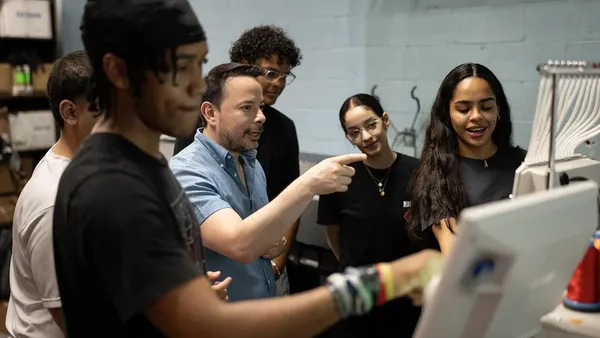Dive Brief:
- Middle school teacher Jill Fletcher has made peer- and self-assessments core to how she evaluates students on their project-based work, she writes for Edutopia.
- Putting this practice into play for a parent event, she used peer reviews as a way for students to strengthen their presentations, and though projects varied, the rubrics on how to consider them were the same and placed the most weight on the final execution of their ideas.
- Students received three assessments — one from their peers, one from Fletcher and one from themselves. As a result of having to critique their own projects and knowing classmates would review them, too, Fletcher believes students put more effort into their work.
Dive Insight:
Assessments are a necessary part of the educational process, helping educators figure out what students have gleaned from their learning. Whether these are high-stakes tests or a weekly pop quiz, teachers read these results to see where a child may still need support and whether they’ve mastered a specific lesson.
As Fletcher found with her students, turning assessments into a peer activity may also broaden what these measurements may reveal. While standardized tests and reviews typically measure academic learning, peer assessments based on projects assess — and help develop — real-world "soft" skills like teamwork and communication.
These soft skills are crucial for students as they venture forward not just into the next grade, but into college or careers. Social-emotional learning (SEL) skills, however, are often hard to measure, which is why specific assessments are now being designed to get a read on this kind of progress. These measurements are also helping educators gain more understanding of a student’s attitude towards school, which can affect their academic work too.
Districts and states have started to place more emphasis on these kinds of assessments, seeding them into classrooms, as seen in the Fresno Unified School District in California and a few districts in the state of Georgia, as well.
By gaining more insight into a student’s SEL development, teachers may discover additional tools they can use to assist students who need support in their learning.











